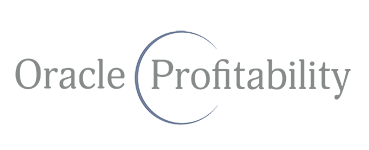Why Even Million Dollar Businesses Struggle with Cash Flow—and What to Do About It
Many business owners assume that if their company is profitable, they’ll never run into cash flow issues. In reality, 82% of small businesses fail due to poor cash flow management, and even companies generating millions in revenue can struggle with liquidity. Just last year, I worked with a seven-figure business owner who couldn’t make payroll—not because they weren’t profitable, but because their cash was tied up in slow receivables and inventory. Yet, some of the most successful, high-revenue businesses find themselves struggling to cover payroll, pay vendors, or manage unexpected expenses. The reality? Cash flow, not just profit, is what determines whether a business can operate smoothly.
At Oracle Profitability, we specialize in helping million-dollar businesses get a handle on their cash flow. Whether it’s a high-growth company struggling with receivables or a well-established business with cash tied up in inventory, we see these challenges daily. "The big question everybody has is: How can my books say I have profit, but I have no cash?" They see their profit line and then look at their bank balance and wonder where all the money went. The truth is, cash flow is about more than just revenue—it’s about how money moves in and out of a business, and that’s where many business owners get stuck.
The Difference Between Profit and Cash Flow
One of the biggest misconceptions among business owners is equating profit with money in the bank. It’s all about what’s hitting your balance sheet versus your profit and loss. Distributions, loans, credit card payments—those don’t show up in your P&L, but they absolutely impact your cash balance.
A business might have strong sales, but if they’re tied up in unpaid invoices or inventory, they won’t have liquidity when they need it most.
Scenario Planning for Cash Flow Stability
I recently worked with a client whose business is highly seasonal. At the end of every year, they run out of money. But when we mapped out three years of cash flow data, we could see the pattern. They needed to plan for those slow months ahead of time—not scramble when they hit.
By forecasting best-case, worst-case, and expected scenarios, businesses can get ahead of cash shortages rather than reacting to them.
Why Cash Flow Gaps Happen and How to Reduce Them
Many cash flow challenges come down to timing. One of my clients was struggling to understand why they were showing a loss at the end of the year. We dug into their financials and saw that their receivables were actually up. The cash wasn’t gone—it just wasn’t in their bank account yet. The company had pushed billing to January instead of December, creating an artificial cash shortage.
Key ways to improve cash flow: One of my clients, a retail business generating over $5M in revenue, struggled with late payments and vendor terms that didn’t align with their cash cycle. By implementing stricter invoicing protocols, renegotiating supplier payment schedules, and introducing a more proactive collections strategy. These are some of the strategies that can make a real impact:
Invoice quickly and consistently to avoid delays in receivables.
Negotiate better vendor terms to align payables with revenue cycles.
Improve collections processes to ensure payments come in on time.
Cash Flow Forecasting: Essential for Stability
Most companies that are successful look at their cash flow trends. One of my recent clients had my team run a three-year projection. We saw she was issuing big bonuses when she felt good about the business—but then struggling to cover bills months later. That’s not a sustainable strategy.
Short-term and long-term cash flow forecasting allow businesses to make data-driven decisions instead of reactive ones.
Building a Cash Reserve Strategy
Businesses should be strategically allocating cash reserves to maintain operational flexibility and safeguard against liquidity crunches. Capital reserves should be aligned with the company’s revenue cycles, ensuring there’s adequate working capital to cover fixed expenses, payroll, and unexpected costs without disrupting growth initiatives. For some, this means saving at least 90 days’ worth of operating expenses. For others, like inventory-based businesses, reserves need to be timed with their receivables cycle.
Cash reserves help businesses avoid:
Overextending themselves in growth phases.
Relying on debt to cover operational gaps.
Making rushed financial decisions under pressure.
I see the same issues repeating across different industries. It always comes back to financial clarity. If your financials aren’t accurate, if your numbers aren’t in order, you can’t make informed decisions. That’s why I push so hard for clean, truly accurate books—because you can’t forecast or manage cash flow effectively without them.
If your business shows a profit but your bank account tells a different story, let’s talk.
We can have a coffee—virtually or in person if you’re in Phoenix—and walk through where your money is really going. We’ll identify the gaps, align your financial strategy with your personal goals, and build a plan that supports both growth and stability.
Schedule your free call today—and get the insight you need to make confident, cash-smart business decisions.


